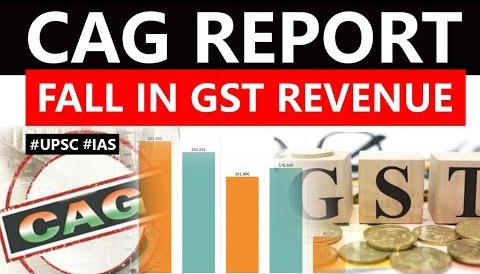Table of Contents

IN NEWS
- CAG has published a report on GST– Indirect tax.
- The report has made a grim observation in its report.
- The technology-driven tax code has failed to curb evasion as was envisaged- CAG.
IMPORTANT OBSERVATIONS OF CAG REPORT
“Post implementation of GST, the Centre’s revenue from goods and services registered a decline of 10% in 2017/18, compared to the revenue from the subsumed taxes in 2016/17.”

EVEN GOVERNMENT DATA SUGGEST
- Later, things should have improved and systems stabilised, but that has not happened.
- Union government had to revise its GST collection target by Rs 1 lakh crore – from Rs 7.43 lakh crore to Rs 6.43 lakh crore.
- The target for 2019/20 is Rs 6.63 lakh crore, just Rs 20,000 crore more.
- There could be many reasons for this like
- Faulty design of the system,
- Economic slowdown etc.
- But the CAG report suggests that, there are massive leakages and non-compliance in the GST system.
INPUT TAX CREDIT (ITC)
- CAG says system validated input tax credit (ITC) through invoice matching is not in place even after 2 years of the GST rollout.
- Technical glitches resulted in rollback of invoice matching, rendering the system prone to ITC frauds.
- Invoice matching is a “critical requirement“, which will yield benefits.
WHAT IS INPUT TAX CREDIT?
- ITC means deducting the tax paid on inputs from the tax payable on the final output by you as a registered taxable person.

LACK OF COORDINATION
- CAG also said there were deficiencies in the GST system, indicating a “serious lack of coordination between the executive and the developers.”
- Infosys wins rs 1,380 crore contract to build GST technology network
NUMBER OF RETURNS FILED
- CAG said, it expected that compliance would improve as the indirect tax regime stabilizes.
- But still there was no improvement in the number of GSTR3B (summary return form) returns filed.
- While 87% taxpayers filed GST3B in April, 2018, this declined to 79% by December.


Latest Burning Issues | Free PDF






















 WhatsApp
WhatsApp